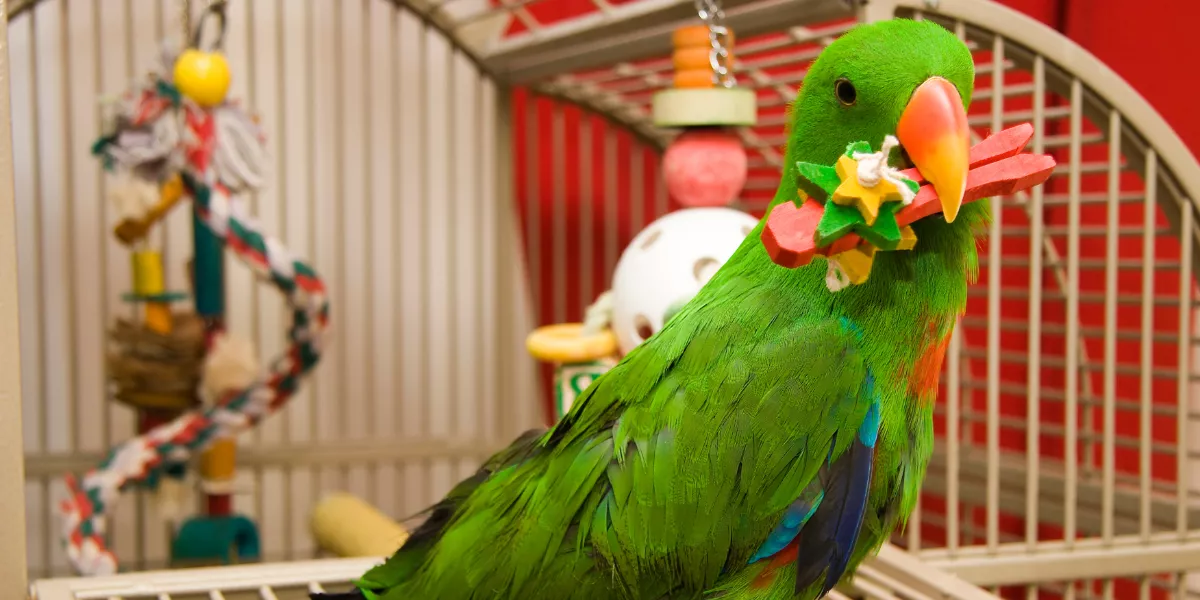
When introducing new toys and accessories to your bird's cage, start by observing their preferences through playtime to understand what they like. Gradually introduce one item at a time to prevent overwhelming your bird and allow them to explore. Monitor their behavior for positive reactions and adjust accordingly to provide mental stimulation. Rotating toys periodically can keep the environment engaging and mimic a natural setting for your bird. Enhancing their cage with new items can lead to a healthier and happier bird.
Assessing Your Birds Preferences
When introducing new toys to your bird's cage, start by assessing its preferences to ensure a positive response. Observing your bird's behavior can give you valuable insights into what type of toys it may enjoy. Some birds are more inclined towards interactive toys that stimulate their minds, while others prefer colorful objects they can chew on. Pay attention to what catches your bird's interest during playtime or when it interacts with objects in its environment.
For example, if your bird seems to enjoy shredding paper or playing with bells, you can use this information to select new toys that align with its preferences.
Additionally, consider the size and physical capabilities of your bird when choosing toys. Birds with larger beaks may prefer toys they can manipulate and chew on, while smaller birds might enjoy puzzles or toys they can easily grip. By understanding your bird's preferences and physical abilities, you can introduce new toys that cater to its specific needs and interests, ensuring a happy and engaged feathered friend.
Gradual Introduction of New Items
To smoothly introduce new items to your bird's cage, consider gradually adding them one at a time to gauge your bird's reaction and interest. Introducing too many new toys or accessories at once can overwhelm your bird and may lead to stress or fear.
Start by selecting one new item, such as a new toy or a different perch, and place it in your bird's cage. Allow your bird some time to explore and interact with the new addition before introducing another new item. By introducing items gradually, you can observe how your bird responds to each one, helping you understand their preferences and which items capture their interest the most.
Gradual introductions also give your bird time to adjust to the changes in their environment. Birds can be sensitive to alterations in their surroundings, so allowing them to acclimate slowly can help prevent any negative reactions. Pay attention to your bird's body language and vocalizations during this process to ensure they're comfortable and happy with the new additions to their cage.
Monitoring Your Birds Behavior
Observe your bird's daily activities and interactions with the new toys in their cage to monitor their behavior effectively. Pay attention to how your bird responds to the new items. Are they curious, excited, or hesitant? Monitoring your bird's behavior can give you valuable insights into their preferences and comfort level with the new additions.
Keep an eye out for signs of stress or aggression, such as excessive vocalization, feather plucking, or aggressive behavior towards the toys. On the other hand, positive behaviors like playing with the new toys, exploring them, or showing curiosity indicate that your bird is enjoying the new additions.
Take note of any changes in your bird's routine or habits after introducing the new toys. By closely observing your bird's behavior, you can ensure that the new toys are enriching their environment and providing them with mental stimulation and entertainment.
Rotating Toys and Accessories Periodically
After monitoring your bird's behavior with the new toys, consider regularly rotating these items and accessories to keep their environment engaging and stimulating. Birds, like humans, can get bored with the same toys and accessories in their cage. By rotating their playthings, you can maintain their interest and curiosity, preventing them from losing interest in their surroundings.
Introducing new toys every so often can also prevent your bird from becoming overly attached to a single item. This can be beneficial in case a toy needs to be removed for cleaning or if it becomes damaged. Rotating toys can also mimic the natural environment where birds encounter new objects and challenges regularly.
When rotating toys, observe how your bird interacts with each new item. This can help you understand their preferences and tailor their environment to suit their needs. Consider introducing different types of toys, such as puzzles, foraging toys, or interactive toys, to provide mental and physical stimulation. Remember, a variety of toys can keep your bird healthy, happy, and mentally sharp.
Conclusion
Overall, introducing new toys and accessories to your bird's cage is a fun and rewarding experience.
By assessing your bird's preferences, gradually introducing new items, monitoring their behavior, and rotating toys periodically, you can keep your feathered friend engaged and stimulated.
Remember to always prioritize your bird's safety and well-being when selecting new items for their cage.
Happy playing!




